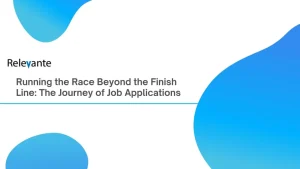In an era of constant organizational change, the workforce is experiencing unprecedented volatility. Layoffs, restructuring, and role transitions are no longer rare occurrences they are part of the modern employment lifecycle. Yet, while companies invest heavily in onboarding to create positive first impression, many fail to apply the same level of strategy and care to off-boarding.
This white paper explores how strategic outplacement and compassionate employee exits can safeguard your employer brand, reduce legal and reputational risks, and even boost retention among your remaining team. By shifting the perception of off-boarding from a transactional HR task to a strategic business function, organizations can transform moments of uncertainty into opportunities for trust, loyalty, and long-term brand advocacy.
Readers will gain actionable frameworks, real-world case studies, and measurable performance indicators to improve their off-boarding strategies and protect brand equity in the process.
Why Offboarding Is the New Onboarding
First impressions shape how employees enter a company, but final impressions influence how they and the market remember you. Employees who leave on good terms often become brand ambassadors, referring talent, returning as boomerang hires, and speaking positively about their experience on platforms like Glassdoor and LinkedIn. Conversely, poorly handled exits can lead to negative reviews, social media backlash, and internal disengagement among remaining staff.
Key Insights:
- Emotional Impact: Mishandled layoffs create a climate of fear and uncertainty that erodes morale.
- Brand Visibility: In the age of transparency, employee stories good or bad travel fast online.
- Alumni Networks: Positive exits increase the likelihood of alumni contributing to your talent pipeline.
“People may forget what you said, but they will never forget how you made them feel when they left your organization.”
Outplacement as a Strategic Investment
Outplacement services are not simply an employee benefit they are an insurance policy for your brand. They provide tangible ROI by:
- Reducing Legal Risks: Structured exit processes lower the likelihood of wrongful termination claims.
- Improving Morale: Remaining employees feel reassured when they see peers treated with dignity.
- Protecting Talent Pipelines: Former employees are more likely to recommend or return to the company.
Case Study:
A Fortune 500 company implemented a formal outplacement program during a major restructuring. The results within 12 months:
- Legal claims dropped by 35%.
- Glassdoor ratings rose from 3.1 to 4.3 stars.
- Internal referrals increased by 22%.
- Alumni rehire rates grew by 40%.
By treating outplacement as part of your employer brand strategy, you ensure that even during difficult transitions, your culture and reputation remain intact.
The Human Side of Layoffs & Metrics That Matter
Layoffs affect more than just the departing employee—they send shockwaves through the entire organization. Compassionate, transparent processes reduce anxiety and burnout, particularly among diverse talent pools, where trust is often harder to rebuild once broken.
DEI Considerations:
Equitable off-boarding practices ensure that all employees receive consistent, fair treatment regardless of role, tenure, or background. This commitment strengthens diversity and inclusion objectives even during challenging times.
Metrics to Track:
- Brand Health: Employer review scores, alumni engagement rates.
- Retention: Voluntary turnover rates after layoffs.
- Reputation Risk: Number of legal claims, social sentiment analysis.
- Talent Pipeline: Rehire rates of alumni, referral volumes.
| MetricBefore | After Outplacement | |
| Glassdoor Rating | 3.1 | 4.3 |
| Exit Interview Satisfaction | 52% | 89% |
| Referral Applications | 120/mo | 210/mo |
Your Offboarding Toolkit & Final Thought
A structured off-boarding process should be empathetic, transparent, and strategically aligned to
business goals.
Exit Communication Checklist:
- Be transparent about the reasons for change.
- Provide outplacement support upfront.
- Maintain consistent messaging across the organization.
- Reinforce company values throughout the process.
Sample Messaging:
“While this transition is difficult, we’re committed to supporting each of you with career coaching, resume guidance, and job search tools. Your contributions matter, and we want to help you succeed in your next role.”
30-Day HR Transition Plan:
- Week 1: Announce changes & outline support services.
- Week 2: Conduct exit interviews, monitor morale.
- Week 3: Engage alumni networks, track sentiment.
- Week 4: Review metrics & refine retention strategies.
Final Thought:
Off-boarding is not the end it’s the start of a new chapter for both the company and the employee. A well-managed exit leaves the door open for future collaboration, reinforces your values, and sends a powerful message: we take care of our people, even when they leave.








